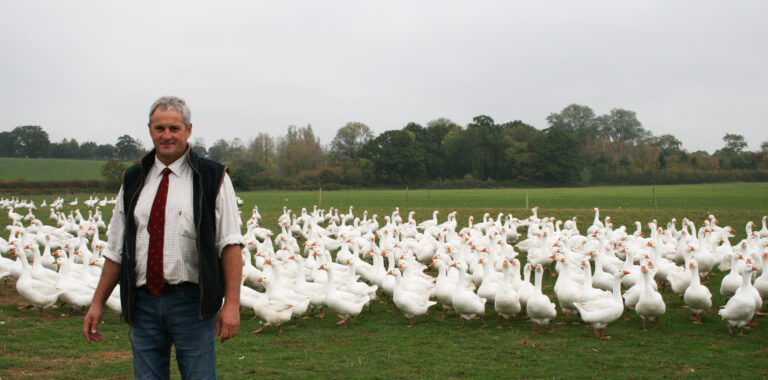Two new guides were launched by the British Poultry Council (BPC) when goose producers from across the UK met for their annual farm walk hosted by the Homewood family at Peach Croft Farm, Radley, Abingdon, in Oxfordshire.
A voluntary code of practice on goose production and an avian influenza (AI) contingency plan will be provided for all members of British Goose Producers.
In introducing the new publications BPC technical director Máire Burnett said the code pulls together all the legislation and market requirements to cover every aspect of rearing geese and would be a working document to be updated to reflect future changes in legislation.
The AI contingency plan has been developed in conjunction with Livetec Systems to provide guidance to poultry producers affected by an AI outbreak or the restrictions imposed following an outbreak in the locality. She said that although there had only been one AI case in wild birds this year, the disease had occurred in other parts of Europe and the UK is now in a high risk period during the bird migration season.
BGP chairman John Franklin, who farms at Thorncote Green, Sandy, Bedfordshire, said the meeting attracted wide support with members coming from across the UK.
“Bill Homewood hosted a great event showing us a valuable insight to his goose business,” he said. “Especially interesting was the captive bolt humane slaughter method which many members are moving over to, and also the quick removal of wax with a rubber finger machine. I’m sure we all picked up a few ideas from Bill and each other.
“Most producers were hoping for a reasonable Christmas, but some members are concerned about sales and would like to see geese more in the media – and nearer the seasonal time – to boost sales.”
He urged members to use social media more to promote their own goose sales locally and nationally, and to invite their local radio to broadcast live from their farm in late November with the sound of geese in the background adding to the appeal.
Bill Homewood, whose family has been producing Christmas poultry for 80 years, told the visitors that as precaution against wild birds he no longer feeds wheat to the geese out in the field, instead using a balanced ration when they are brought into the barn at night.
He recalled how they began rearing geese more than 40 years ago after his mother Nancy had decided to choose a goose rather than a turkey for Christmas and was then unable to find one among the nine or ten butchers with stalls in Oxford market. The next year they reared 30, which grew to 300 the following year, and they are now producing 2000 for sale through their farm shop, more than 60 butchers and wholesale customers from Jersey to Cheshire.
He said that butchers are looking for heavier geese nowadays with oven-ready weights of at least 5 kg (11 lb). They sell geese in four weight bands from 4.5 – 5 kg up to 6.5 kg plus. Goose fat is processed and sold in 300 ml glass jars which butchers stock all the year, while the feathers and down are made into pillows retailed in the farm shop.
BGP members saw how the goose production runs alongside free range turkeys, and fits into the mixed enterprises on the 650-acre arable farm that also grows asparagus, strawberries, sweet corn and pumpkins.


